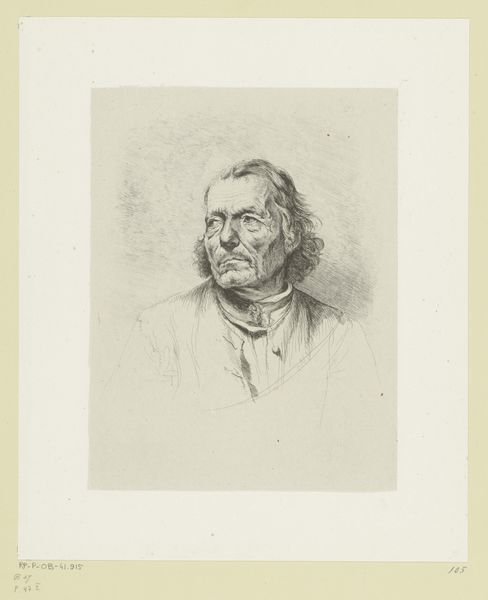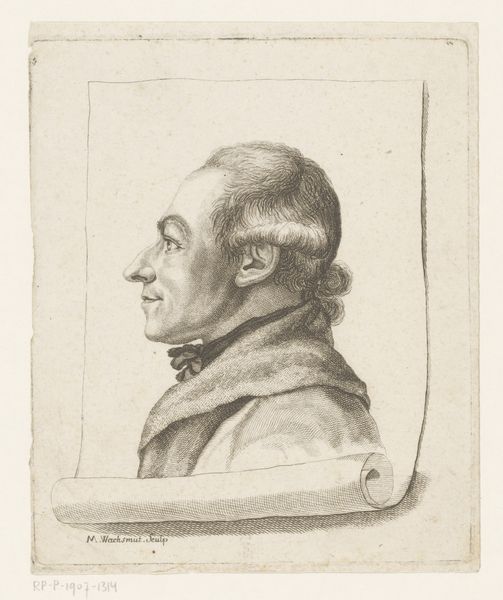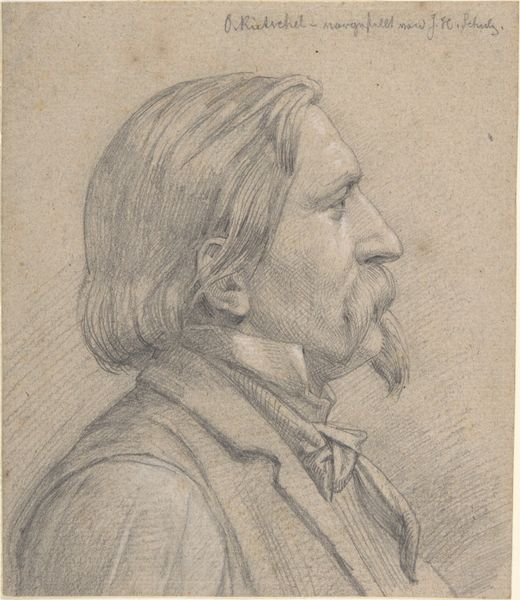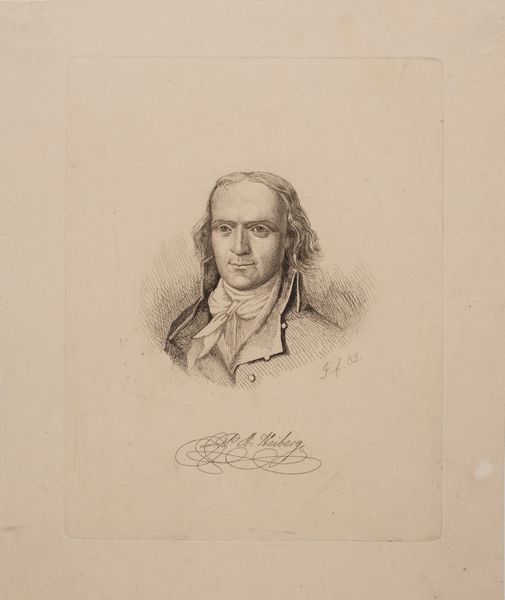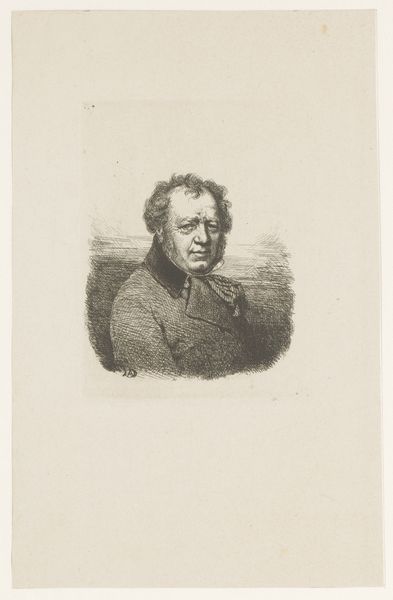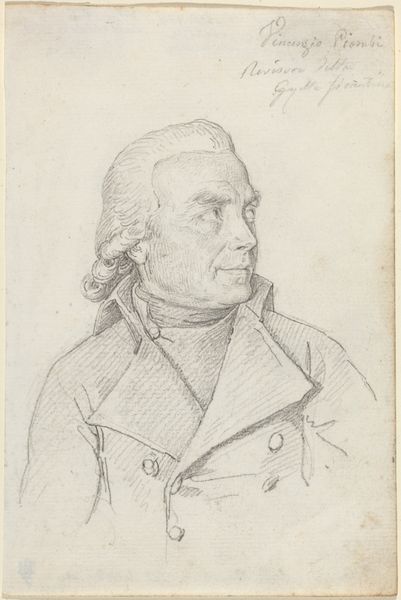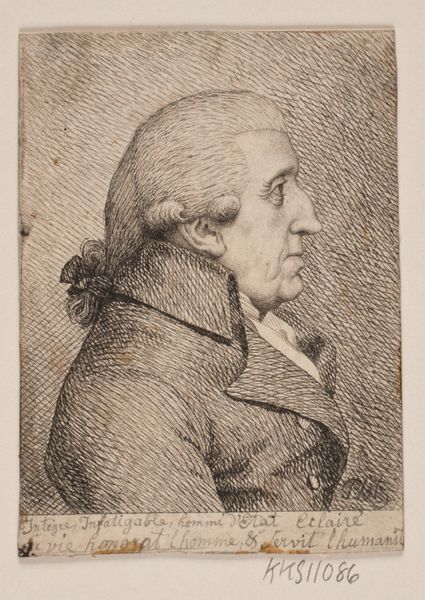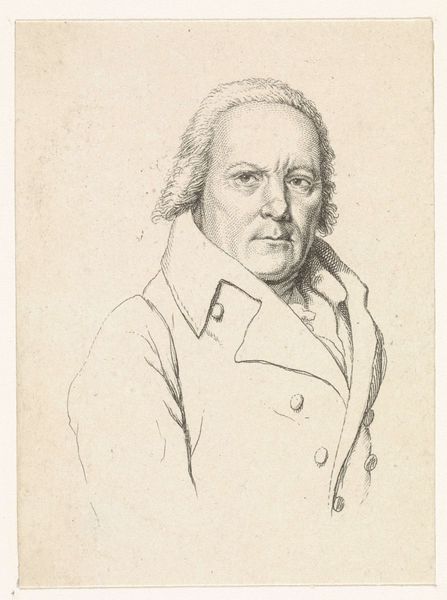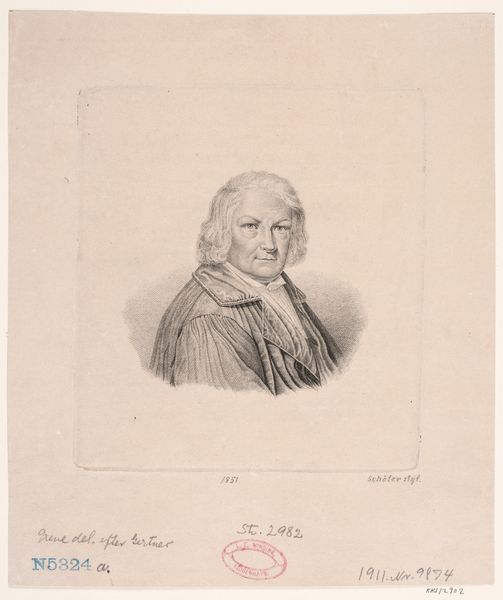
print, etching
#
portrait
# print
#
etching
#
portrait drawing
#
academic-art
#
realism
Dimensions: 195 mm (height) x 120 mm (width) (plademaal)
Editor: So, this is Carl Thomsen’s etching of V. A. Schlegel, from 1869. It's a pretty straightforward portrait, but the details in the face are quite striking, particularly around the eyes and mouth. How do you interpret this work in terms of its historical context? Curator: What's immediately striking is how this piece operates within a specific social and political landscape. The Realist style suggests an emphasis on truth and objectivity. But let's push beyond the surface. Who was likely commissioning or purchasing portraits like this? What did portraiture represent in 19th century Danish society? Editor: Well, probably the wealthy and powerful? This feels like an image meant to convey respectability. Curator: Exactly! Think about the power dynamics at play. Portraits served to solidify social standing, often reinforcing existing hierarchies. Schlegel, whoever he was, wanted to project a certain image. The somewhat softened Realism, the focus on a "dignified" rather than "warts and all" depiction is quite telling. Editor: So even Realism could be manipulated for a specific agenda. Does the medium, etching, contribute to this in any particular way? Curator: Absolutely. Etching, while capable of detail, allows for a degree of refinement and control that differs, say, from a more immediate painting. Consider how this deliberate choice reinforces the message of controlled power and intellectualism the sitter wanted to convey. How does that impact our reading of the individual portrayed? Editor: I see, it's not just about accurately representing his features, but presenting a carefully constructed version of himself within a particular social framework. Curator: Precisely. Thinking about portraiture as a social practice opens up avenues for understanding how identities were performed and power maintained in 19th century Denmark. This seemingly simple portrait contains multitudes! Editor: This has given me a much more complex perspective on the work! Thank you.
Comments
No comments
Be the first to comment and join the conversation on the ultimate creative platform.
